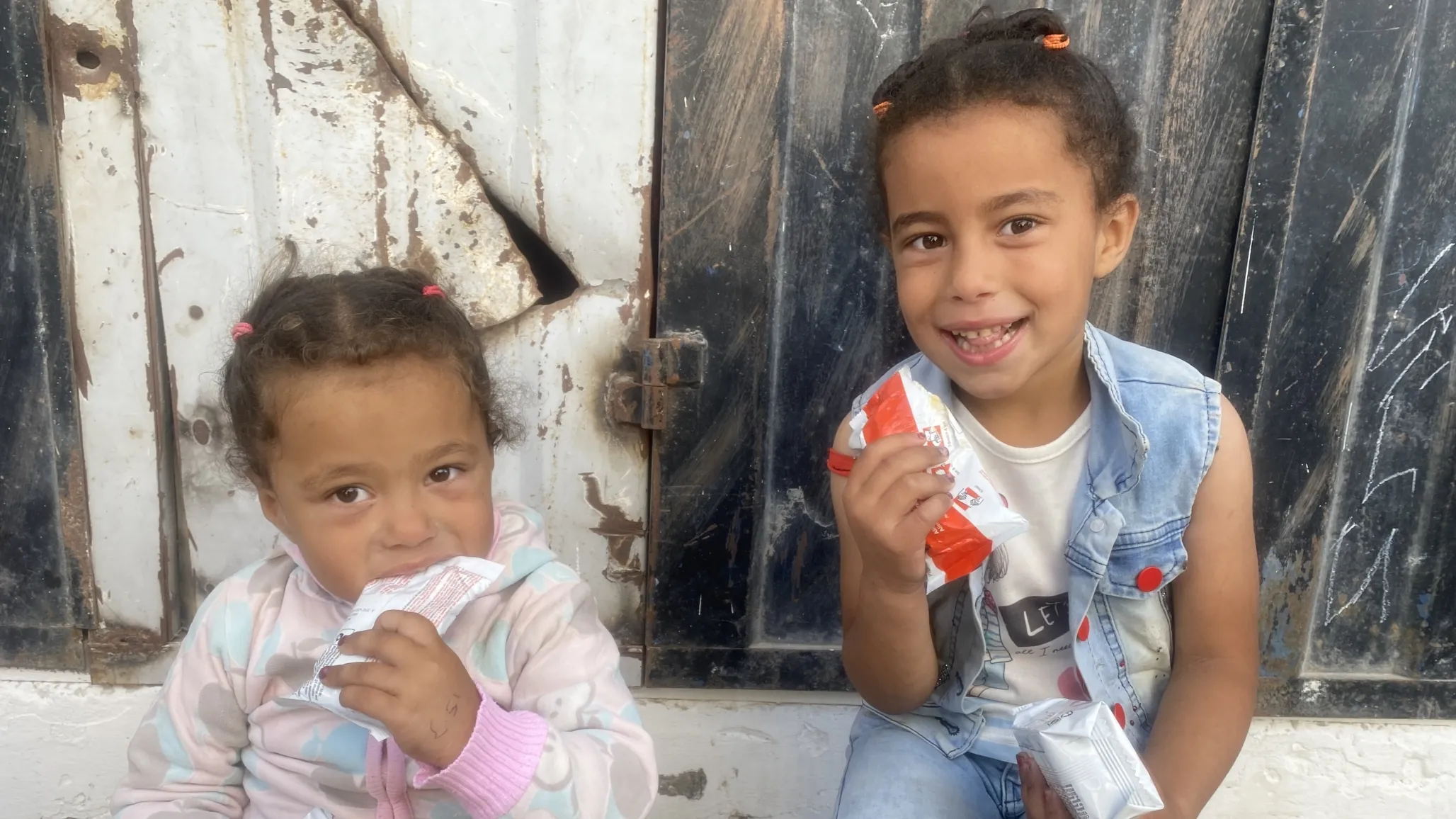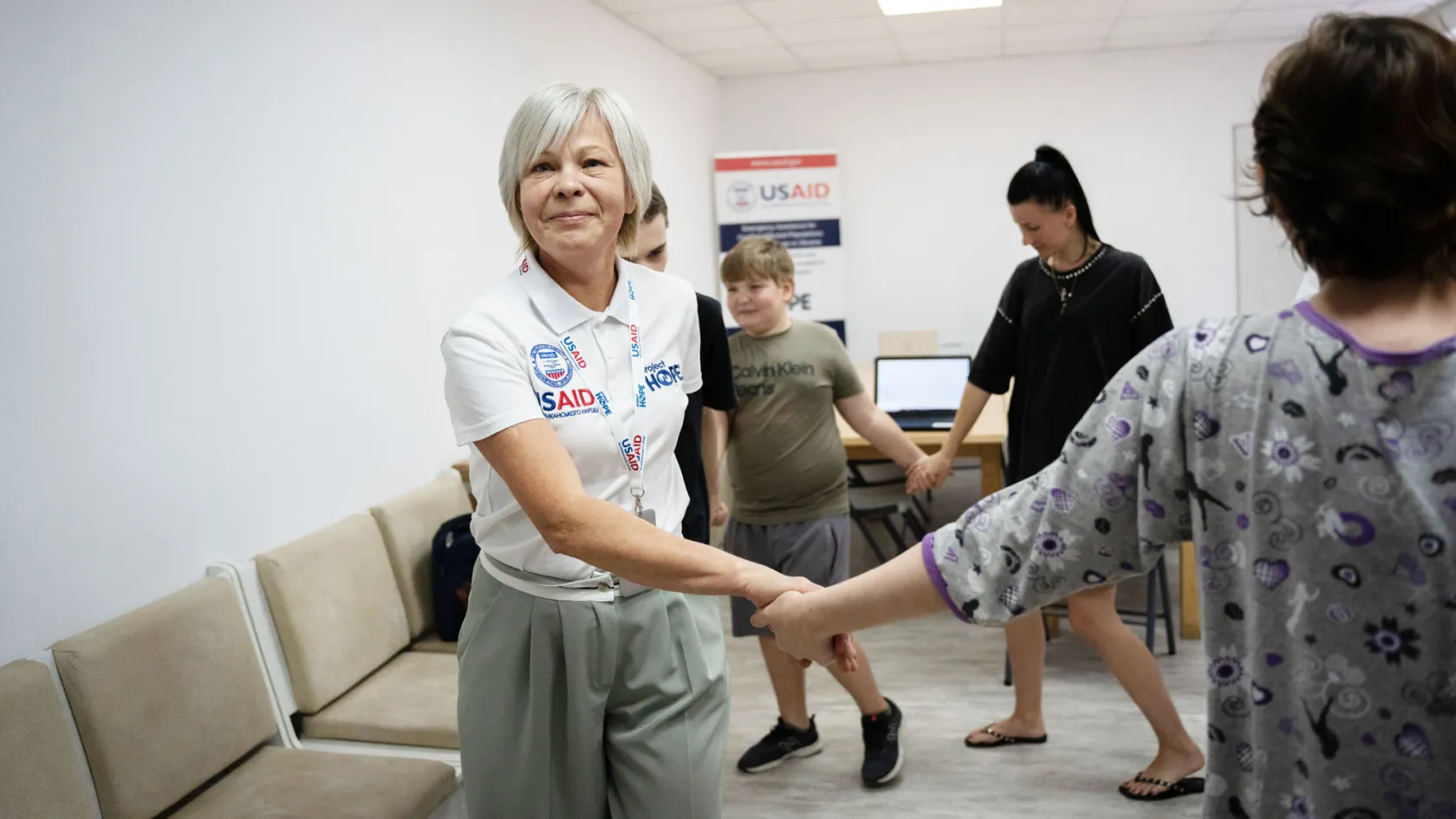What is Asylum?
Millions of people around the world have fled home in search of protection from persecution. Here’s what you need to know about the pathway to asylum, and how Project HOPE is reaching asylum seekers with health and social services.

The number of people escaping persecution and seeking protection around the world is at a record high.
Ongoing conflict in places like Ukraine, Sudan, Venezuela, and Syria continued to push millions of people from home in search of safety across borders. Last year, 900,000 people were granted asylum worldwide, finding hope for peace and inclusion in new countries. At the end of 2023, nearly 7 million people were awaiting a decision on their asylum claims — a 26% increase from 2022.
Read on to learn more about what asylum means, the scale of the displacement crisis, and how we’re responding to the resulting health emergency at Project HOPE.
What is the definition of asylum?
People can apply for asylum when they flee persecution in their country of origin and seek safety in another country.
The United Nations High Commissioner for Refugees (UNHCR) defines asylum as the right to be recognized as a refugee and receive various forms of legal protection and material assistance. The specifics vary from country to country, but this generally includes the right to remain and protection from being returned to one’s home country (non-refoulement), as well as access to key social services such as housing, education, and health care.
In order to successfully obtain asylum, one must show that their fear of persecution is credible and well-founded, providing evidence and testimony to support the claim.

Who is eligible for asylum?
Anyone facing persecution based on race, religion, nationality, political opinion, or social beliefs can seek asylum. People are also eligible to seek asylum if they are fleeing life threatening conflict or war in their home country, but current laws do not extend to support those who are forcibly displaced due to climate change.
The right to seek asylum is a universal human right, protected by international law. It was first enshrined in 1948 in the Universal Declaration of Human Rights and then in the 1951 Geneva Convention and its 1967 Protocol.
In the U.S., the Refugee Act of 1980 was passed to ensure individuals seeking asylum are protected from being sent back to countries where they would face persecution or human rights violations.
In June 2024, the Biden administration issued an executive action banning asylum for people who cross the border without using designated ports of entry “when the Southern border is overwhelmed.” The order will be discontinued when border crossings are “low enough for America’s system to safely and effectively manage border operations.” There are some exceptions for certain populations, such as unaccompanied children and victims of trafficking, but the policy significantly impacts people’s ability to claim asylum in the U.S.
What is the difference between a refugee and an asylum seeker?
Both refugees and asylum seekers have been forced to flee home and seek international protection due to persecution. They are simply at different stages of the journey.
An asylum seeker is a person who has left their country and is in the process of applying for protection in another, while a refugee is someone who has already received that legal protection and been granted specific rights.
Every refugee was once an asylum seeker, but not all asylum seekers will be recognized as refugees.

How many people are claiming asylum?
At the end of 2023, more than 117 million people of all ages and backgrounds were forcibly displaced around the world. Approximately 6.9 million of them were asylum seekers. This is the highest number ever recorded, and it continues to grow.
Some 3.6 million new individual asylum claims were registered over the course of last year, marking a 40% increase from 2022. Most claims came from nationals of Venezuela, Colombia, Syria, Sudan, and Afghanistan. The U.S. received one-third of all applications (1.2 million, representing a 61% increase from the year prior), mostly from Latin America and the Caribbean.
Why do people seek asylum?
Forced displacement is often a result of conflict and persecution.
Those seeking asylum are fleeing life-threatening levels of danger: war and conflict, human rights violations, and political instability. Between 2021 and 2023, the average number of people forced to flee home in a year (over 27.8 million) was nearly double the 25-year average (14.3 million). If global trends persist and the intensity of conflict grows, the number of people seeking asylum will only continue to increase.
In Latin America and the Caribbean, violence and instability have led to an unprecedented migration crisis. Millions of families from countries like Venezuela, Honduras, and Haiti have been forced from home. Those who decide to make the journey across borders — sometimes on foot — risk heightened exposure to violence from criminal gangs, robbery, sexual abuse, and human trafficking. Migrants often arrive to their rest points and final destinations on the brink of exhaustion and in desperate need of medical attention.
“It’s a situation that could happen to anyone. Today I’m helping, but tomorrow someone could be helping me. They may not be from my country, but they are still our people. Any of us could find ourselves in this position someday.”
–Dr. Viviana Santos, Project HOPE doctor working on the Honduras-Nicaragua border
How difficult is it to obtain asylum?
Asylum applications are individually evaluated by governments. The process of assessing each case is known as Refugee Status Determination (RSD) and can take anywhere from a few months to a few years. High volumes of applications and administrative backlogs often delay the process.
In 2023, 1.4 million people received substantive decisions on their individual asylum applications. This is 8% more than in 2022 and 37% more than in 2021. Despite the improvements in efficiency, new individual asylum applications are still coming in faster than substantive decisions are being made. This has been the case since 2006.
In the U.S., asylum has been granted to 40% of the nearly 700,000 cases decided since 2000. Those who have legal representation are significantly more likely to receive asylum. Between 2021 and 2022, 46% of asylum applicants were granted asylum, and applicants who had an attorney were over twice as likely to receive asylum or some other form of relief.
What happens once asylum is granted?
In 2023, 900,000 people were granted asylum worldwide — a notable increase from previous years. This includes some 110,000 people who were granted asylum in the U.S., which is more than double the number of people granted asylum in 2022.
When a person is granted asylum, they receive various forms of protection and assistance needed to find peace of mind in a new country and integrate into a new culture and society.
The specifics depend on the country granting asylum, but legal protection typically includes the right to remain (with the eventual chance to apply for residency or citizenship), the right to work, and the right to access the legal system if needed.
Material assistance generally includes temporary housing, health care, education, and social welfare such as food or cash. It may also include access to integration offerings such as language courses and job placement services.

How is Project HOPE helping asylum seekers?
Project HOPE helps improve access to health and social services for refugees, internally displaced people, migrants, and asylum seekers around the world.
Throughout Latin America, we’re supporting health service providers and creating linkages to care for medically underserved communities, including people seeking asylum in the United States or elsewhere.
With support from The Church of Jesus Christ of Latter-day Saints, Project HOPE’s medical teams are meeting the health and humanitarian needs of migrants across Colombia, Ecuador, and Honduras by providing clinics along common migration routes. These clinics provide free access to primary health, medications, mental health services, and more.
“We are able to provide something to each person we come across. To be able to provide care and tools for them is very gratifying.”
–Dr. Marilyn Garcia, Project HOPE psychologist in Ecuador
>> Learn More: In Latin America, Migrants Face a Health ‘Emergency’



